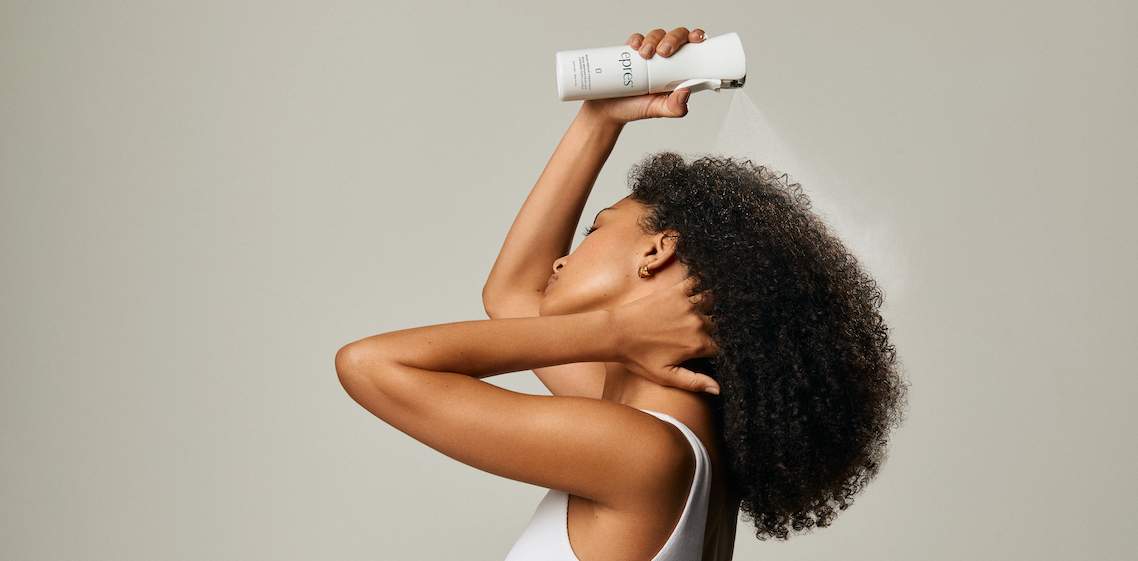One of the inventors behind Olaplex is getting back into the bond-building space.
Olaplex was founded in 2014 by Dean and Darcy Christal, with the formula developed by Dr. Eric Pressly and Dr. Craig Hawker. Now Pressly and his business partner Michael Sampson, both co-CEOs, are launching their own brand, Epres, based on new research Pressly has done.
Launched Wednesday, Epres sells a refillable leave-in at-home treatment and a professional treatment for $48 and $79, respectively. Refills of the at-home treatment can be bought in packs of two for $34. The at-home product sells through a direct-to-consumer website and via select salons. Pressly declined to share the active ingredient that causes the disulfide bond-repairment, citing its patent-pending status. Olaplex frequently touts its proprietary bis-aminopropyl diglycol dimaleate ingredient in its brand communications around bond-building. Private equity firm Advent International bought Olaplex in 2019 before it spun it out in an IPO in 2021 valued at around $14 billion. Pressly’s LinkedIn indicates he departed Olaplex in 2019.
A key aspect of Epres is that it has an acid-free formulation. Pressly said acid can interfere with a hair’s pH balance. Hair colorists don’t have to be too concerned with precise measuring when using the Epres product during chemical and dye treatments, and it won’t interfere with color. Olaplex products do contain various acids, such as Etidronic Acid, Ascorbic Acid and Citric Acid. Epres uses oil-based molecules, which Pressly said help to repair hair even after it’s dry — a phenomenon he labeled “bio-diffusion.” Otherwise, when hair dries, so do hair-care ingredients like proteins, preventing them from penetrating further into the hair to repair it. Customers receive a waterless Epres product in the form of a concentrated liquid formula which they add to a refillable spray bottle filled with water.
“As a product developer and inventor, the focus has to be on what I can do better, to give the consumer better options to solve [their] problems,” he said. “You can get amazing results in 5-10 minutes, but even [more] improved results by leaving it in overnight. It’ll continue to work during that timeframe.”
Bond-building has become a hot category within hair care, with both indie brands launching and heritage brands getting into the mix. K18 launched in 2020 and has quickly made a name for itself on social media. Redken followed up with its own acidic bonding line in March, and Living Proof joined the pack in July. According to Glossy-exclusive data from Launchmetrics in January, Olaplex ranked as the No.1 buzziest bond-building brand, followed by Redken’s Acidic Perfecting Leave-in Treatment. L’Oréal’s EverPure Sulfate-Free Bond Strengthening Conditioner, K18 and Aveda’s Botanical Repair Strengthening Leave-In Treatment rounded out the top five.
“The idea of [hair] repair has been around for a long time, as has the concept of healthy hair. The question is whether there’s an opportunity to continue to innovate, based on what we know now,” said Sampson. “There’s a larger addressable market to cater to that has damaged hair. We’re not necessarily looking at the world of bond-building and saying, ‘We want to be a part of that world.'”
Ad position: web_incontent_pos1
Pressly said Epres plans to lean into a science- and evidence-based marketing approach by showing before-and-after electronic microscope images of treated hair. But Epres will not highlight clinical claims. According to Pressly, that strategy leans on an “arbitrary number that has no meaning” and is ineffective. He said the product outperforms competitors enough to easily view its superior results, compared to others. Epres is distributing “tens of thousands” of samples to professionals, allowing them to test out the professional version, Pressly said.
At launch, Epres will heavily focus on digital advertising and gifting to hundreds of micro and nano Instagram and TikTok influencers. It will skip macro-influencers, however, said Sampson.
“We’re pushing an evidence-based narrative, as opposed to a claims-based narrative,” he said.




